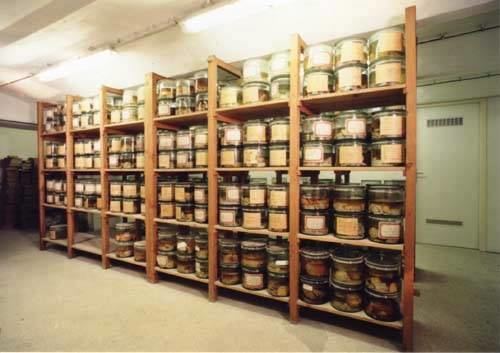 | ||
Am Spiegelgrund was the name of a children's clinic in Vienna where 789 children were killed under the Nazi Regime Children's Euthanasia Program, also known as Aktion T4. Between 1940-1945, the clinic operated as part of the psychological institution “Am Steinhof” (renamed the Otto Wagner Clinic) on the Baumgartner Höhe, now located in Penzing, the 14th district of Vienna. This clinic was divided into a reform school and a sanatorium for children, which included a so-called Children’s Ward, where sick, disabled, and otherwise ‘un-educable’ adolescents were abused and subjected to harsh medical experiments. Some died by lethal injection and gas poisoning; others by disease, undernourishment, exposure to the elements, and 'accidents' relating to their conditions. The brains of up to 800 victims were preserved in jars and housed in the hospital for decades. Today, the name “Am Spiegelgrund” is synonymous with the heinous crimes committed by the Nazi medical division.
Contents
Context
Hitler's "Final Solution" was the order for the genocide of Jews in Europe. There were also many euthanasia centres in Germany and Austria for people suffering from mental diseases or handicaps: Hadamar Euthanasia Centre and Hartheim Euthanasia Centre, for example. But not just adults were killed. Children were "mercifully" sent to Children's Hospitals. The most prominent of these was the Kinderspital (Children's Clinic) am Spiegelgrund in Vienna.
Euthanasia of children
During World War II, Spiegelgrund was a children's clinic led by Ernst Illing and for two years by Heinrich Gross. Many patients who had been deemed seriously handicapped died in mysterious circumstances. Upon inquiry, they would blame pneumonia or a fatal muscle conniption caused by the mental state of the patient. In reality, the children were being killed by lethal injection and gas poisoning.
After death, the bodies were subjected to medical experiments. Brains and other body parts were removed, placed in formaldehyde jars or sealed in paraffin wax, and stored secretly in the basement for 'research'. After the war, the remains of over 800 children were discovered in the hospital and were buried in a secret memorial service. They were officially put to rest in 2002 and Gross had his Honorary Cross for Science and Art (awarded in 1975) stripped in 2003.
Detailed coverage of the burial ceremony, as well as full background are told in the 2004 film Gray Matter.
In April 2002, 600 urns containing the remains of children killed at Spiegelgrund were interred at Vienna's Central Cemetery in the section reserved for victims of the Nazi regime. Approximately 300 mourners came to pay their respects at the funeral, and the names of all the children are inscribed onto eight stone slabs, accompanied by a stone bench and bowl of flowers.
Among those laid here were the following: Gerhard Zehetner, 18 months old; Irma Sperling, aged 3, from Hamburg; Annemarie Danner, aged 4, whose older sister, Waltraud Häupl, became an outspoken supporter of a memorial when she discovered her sister's remains in 1999; Felix Janauschek, aged 16, was diagnosed with cerebral palsy. He came down with the flu in March 1943 and was left outside on the balcony of the ward until his condition worsened. His official cause of death was pneumonia.
